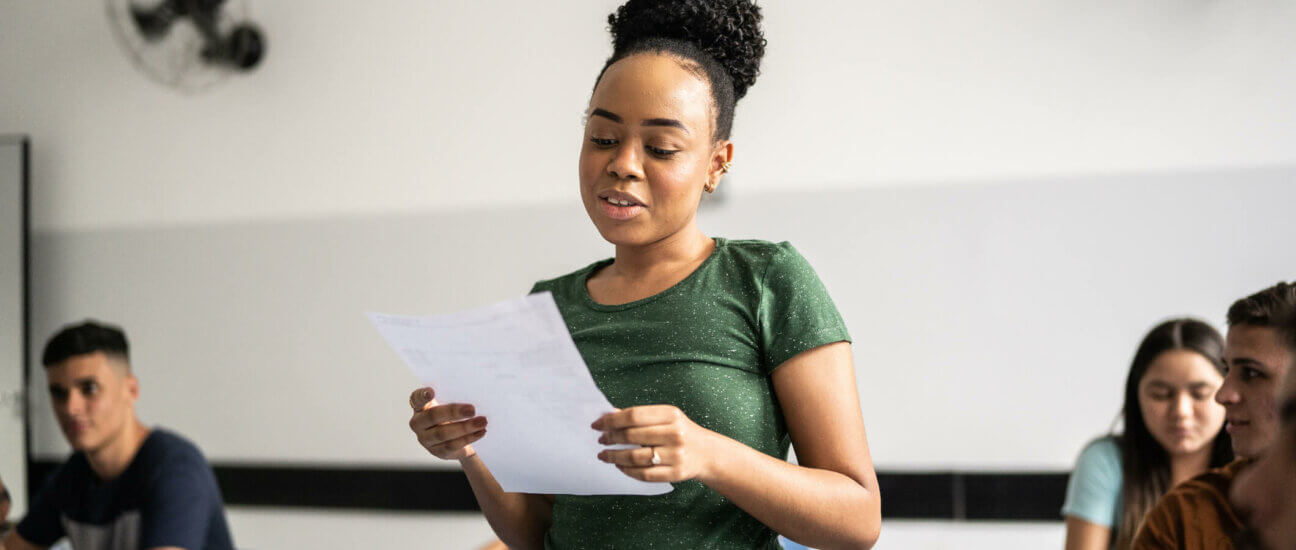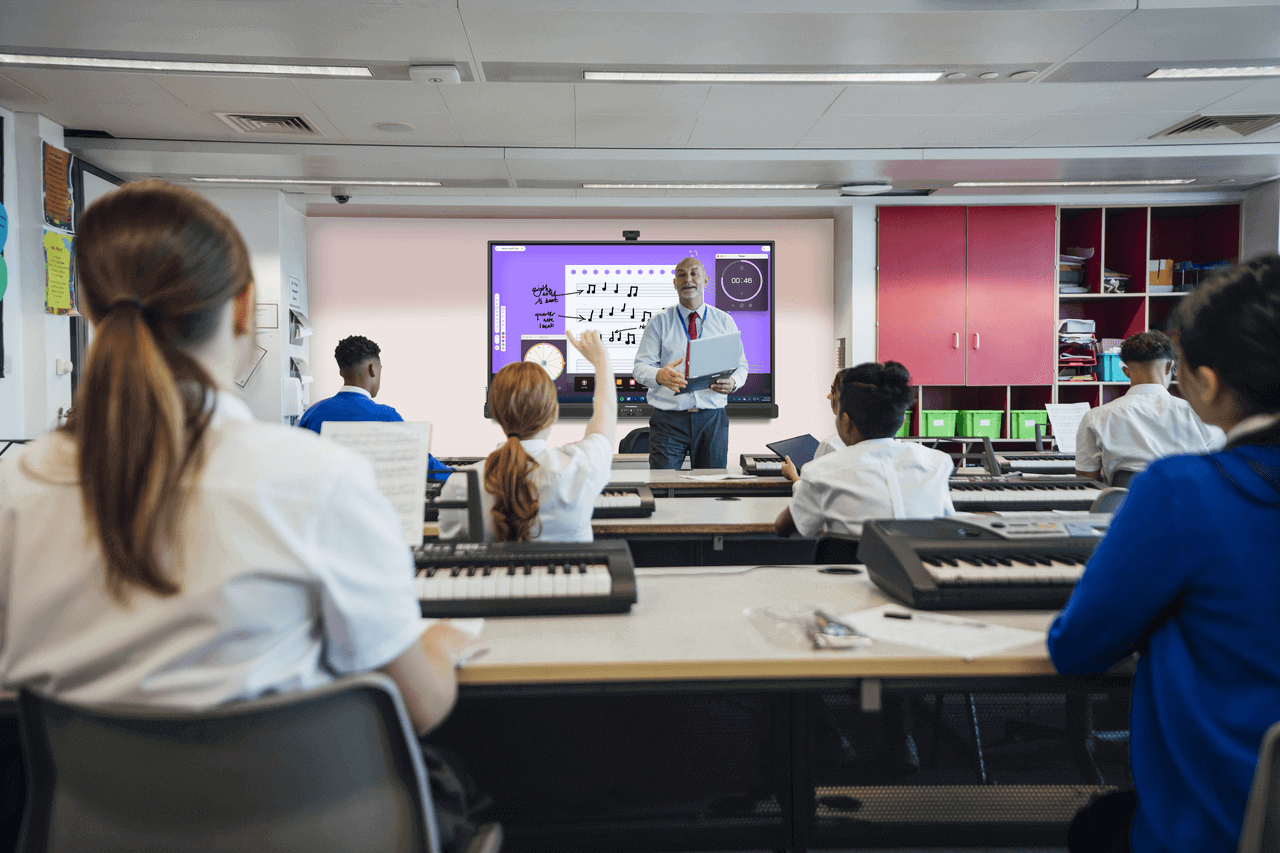Published on December 12th, 2023
Life Skills for Children: How to Teach Transferable Skills in the Classroom
14 minute read

The role of a teacher extends beyond helping kids prepare to pass tests and gain qualifications. School is a significant part of kids’ socialisation processes, and their experiences at school will go some way to shaping their futures.
With this in mind, it’s vital that kids are taught how to behave and interact with their classmates and teachers alike from a young age to prepare them for everyday life.
To help you give your students the best possible start to life outside of the classroom, we compiled this guide, which explores the critical life skills to teach children at school.
What are transferable skills?
Transferable skills are a set of abilities that can be applied to various jobs and industries. Sometimes known as ‘soft skills’, transferable skills are not always overtly taught, but most often attributes we develop through life experiences.
What are life skills?
Life skills are a set of interpersonal skills and abilities that enable people to make informed decisions, think critically and creatively, and communicate effectively, amongst other things. These characteristics help students to build healthy relationships and become self-sufficient and independent as they advance into adulthood.
What kinds of life skills are taught in the classroom?
While life skills education is not a specific subject, the tasks you set for your students enable them to develop key attributes they require in adult life. Some essential life skills include:
- Communication skills
- Decision-making skills
- Critical thinking skills
- Leadership skills
- Organisation skills
- Adaptability
- Money management skills
- Problem-solving skills
Additionally, socialising and interacting with their classmates teaches kids how to build and maintain healthy relationships, an important life skill that builds self-esteem and benefits our mental health.
Why is it important to teach life skills at school?
Ensuring your students learn the most important life skills from an early age gives them a good foundation and prepares them for challenges in later life. Kids must be taught life skills in school for the following reasons:
1. Enhanced employability
One of the main roles schooling plays is readying kids for the world of employment. By teaching critical skills like teamwork, leadership and time management, students can leave school and go on to professional success.
2. Improved mental and emotional well-being
By learning life skills, students can become more emotionally intelligent, building their self-awareness and understanding how to communicate effectively. In the long run, this helps students become more resilient and positively impacts their mental health and overall well-being.
3. Promoting independence
Understanding the importance of essential skills like saving money, cooking, and keeping themselves and their surroundings clean enables students to take care of themselves when they leave home.
4. Social development
Life skills education often involves teaching social skills, empathy, and conflict resolution. These skills are essential for building positive personal and professional relationships and contributing to society.
5. Financial literacy
Teaching students about money management, like budgeting, and investing, is crucial in our complex financial world. Understanding these concepts can help students save money and make informed financial decisions later in life.
6. Prevention of challenging behaviour
Life skills education can include topics relating to health, relationships, and substance abuse prevention. Teaching students about the risks associated with certain behaviours and how to make healthy choices can contribute to reducing risky behaviours among young people.
7. Civic responsibility
Life skills extend to areas like citizenship and social responsibility. Instilling a sense of civic duty and ethical behaviour in students prepares them to be responsible and active members of society.
How to teach transferable skills to young children
Instead of looking at transferable skills like a lesson that you need to teach kids, you should review the existing curriculum and see where these skills can be incorporated into everyday learning. For example, this could include introducing the concept of money into maths lessons to start preparing kids’ financial literacy skills.
In this section, we explore how you can introduce transferable life skills to primary school students to promote critical thinking and build friendships in a healthy and responsible manner.
How to teach sharing in the classroom
Teaching kids how to share from a very young age can positively impact their social development as it teaches them about cooperation and being considerate to other people – essential life skills for building positive relationships and interacting effectively.
To teach your students how to share, you can:
- Set expectations: Explaining why sharing is important and the benefits, e.g. making friends, will help foster good habits in your class.
- Lead by example: At a young age, students are impressionable and will likely mimic adults’ behaviours, so you must demonstrate sharing to encourage kids to do the same.
- Create sharing opportunities: Practice makes perfect, so arrange group activities where children are forced to share games and toys.
- Encourage students to compromise: Showing students how to find alternatives makes sharing easier.
- Use positive reinforcement: Celebrate small wins, praise instances of sharing and acknowledge kids’ efforts to encourage them to share more.
How to teach listening skills in the classroom
Listening and reacting appropriately is a crucial life skill that applies to all areas of life, from maintaining relationships to developing conflict resolution skills, performing at work, and more. To develop students’ listening skills, you should:
- Keep it straightforward: When you’re communicating with your class, make sure you use clear and plain language. Avoid jargon, complex sentences and going off on tangents, especially when you’re giving instructions and explanations.
- Encourage discussions: Teaching kids to listen to their peers forces them to be respectful and thoughtful when responding to other people’s opinions and ideas. Teaching public speaking skills to kids will conversely also help them to become great listeners too.
- Offer active feedback: Praise kids for their listening skills, point out specific instances where they demonstrated good listening and explain areas that may need some work.
- Use visual aids: Pictures, charts, and diagrams are valuable resources to support your verbal instructions as they enhance kids’ understanding and help them grasp concepts.
- Tell stories: When reading stories aloud, you should check that students are following by asking them to re-tell the story in their own words or to predict what could happen next. This promotes active listening and develops kids’ comprehension skills too.
How to teach transferable skills to secondary school children
Throughout their time at primary school, your students will have honed their life skills, so when they get to secondary school, you can focus on preparing them for life outside of school. This includes giving students the tools to live independently and responsibly.
Two of the most important life skills for young adults to understand relate to their financial futures and how to conduct themselves in the workplace.
How to teach financial awareness in the classroom
As they head towards adulthood and get jobs, they will start to become financially independent, so it’s crucial they are given the tools to make informed decisions about their money, so they can manage their finances responsibly. Here are five methods to help secondary school students become financially aware:
- Start early: You should introduce financial concepts early in secondary school to help students become familiar with terminology before progressing to more complex topics as they advance through school.
- Set budgeting exercises: Having students manage budgets for hypothetical scenarios, either in business studies classes or maths, will help them understand how to manage their income and expenses, pay bills, and the importance of setting a budget.
- Talk about credit and debt management: There is a stigma around being in debt, but in reality, it’s something that many people experience. Having open conversations about responsible borrowing and the implications of being in debt will help students make well-informed decisions in the future.
- Discuss careers: Talking about potential career paths and salaries will help students understand the relationship between their education and earning potential.
- Teach them about consumer awareness: Students must understand their rights, responsibilities and the rules and regulations to protect their finances. You could discuss product warranties during business studies lessons or teach students how to identify scam emails and fraudulent schemes in IT lessons.
How to teach workplace skills in the classroom
Teaching students how to behave and act in a professional environment is vital in helping prepare them for the world of work. The five skills below will help students become more responsible and capable before they start their careers:
- Decision making: Discussing ethical behaviour and asking students to make tough decisions will make students think with integrity and responsibility and force them to understand other ways of thinking and approaches to situations.
- Time management: Being punctual, prioritising tasks and working to deadlines are essential life skills that apply to all jobs and are vital for productivity.
- Communicating effectively: Encourage students to articulate their thoughts and feelings and express themselves clearly in verbal and written communication.
- Adaptability: Teaching students how to adapt and learn new skills will help them navigate changes in their career paths and remain an asset to the companies they work for and the industries they work in.
- Problem-solving: Analysing issues, critical thinking and finding solutions are skills that can be transferred to all lines of work.
Using technology to teach essential life skills
One of the best ways to teach kids transferable and life skills is to take a whole-class approach. This way, your students can work together, developing their leadership and communication skills while understanding the importance of listening to each other and working together.
To help you do this, use your interactive whiteboard wherever possible. Engaging children using technology is a great way to make these life skills more relevant and accessible for children in the here and now. For example, encouraging debate and nurturing kids’ decision-making skills can be made more accessible by presenting pros and cons lists on the large display, ensuring everyone has access to the same information, and by bringing media such as video and music to the classroom.
Likewise, interactive quizzes and puzzles stimulate critical thinking and encourage kids to analyse information.
To prepare kids for the world of work, an interactive display, like the Promethean ActivPanel, is a vital resource that can help to build digital literacy, hone presentation skills, and encourage collaboration and teamwork.
As we have established throughout this guide, teaching life skills such as listening, sharing and managing emotions is not necessarily about addressing them overtly, but supplementing the current curriculum with opportunities for children to grow and develop as people.
For additional tips on getting the most out of lesson times, explore our guides for boosting student engagement among learners of all ages, including:




